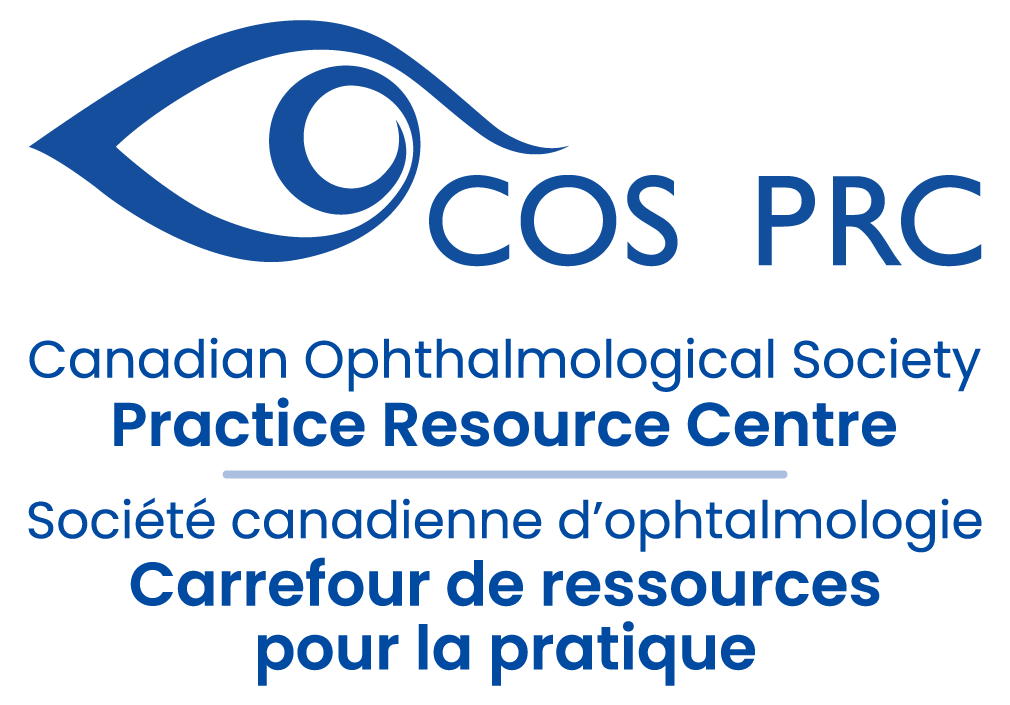Category Archives: For Ophthalmologists
Ensuring our Own Well-being as we Care for Others During the COVID-19 Crisis as Individual Physicians
Apr 13th, 2020
As individual physicians, we can practice strategies to increase and maintain our personal resilience. Feeling stress does not mean we are not coping well or not able to do our job. In fact, it is a normal human response, and may be useful in allowing us to function during this difficult time. The important thing […]
Virtual Care for Canadian Physicians
Apr 11th, 2020
This playbook was written to help Canadian physicians introduce virtual patient encounters into their daily practices. It is intended to be virtual care platform and vendor agnostic. It focuses on video visits, though phone calls and patient messaging are also categorized as virtual care. While not exhaustive, the playbook covers all key considerations to succeed […]
Lacrimal irrigation /Surgery/Manipulation During the COVID-19 Pandemic
Apr 7th, 2020
April 7, 2020 The Canadian Society of Oculoplastic Surgery and the Canadian Association of Pediatric Ophthalmology and Strabismus have evaluated the management of lacrimal disorders and the risks to ophthalmologists during this COVID crisis. The attached statement has been endorsed by the COS Board of Directors. These comments and recommendations are based on the “conditions […]
COVID-19 Cases in Canada : Latest Data and Information
Apr 5th, 2020
https://www.canada.ca/en/public-health/services/diseases/2019-novel-coronavirus-infection.html#a1
The Wills Eye Knowledge Portal
Apr 2nd, 2020
The Wills Eye Knowledge Portal provides free online learning for ophthalmologists. Featured Content Includes Free online education Surgical Videos Visiting Professor Series Lectures for Residents (BCSC Series) Live Streamed Chiefs’ Rounds Newsroom commentary on trends and treatments in ophthalmology Access Details To access the courses on the Wills Eye Knowledge Portal please visit: www.willseyeonline.org.
Videos for Donning & Doffing PPE
Mar 31st, 2020
The first video shows how to do donning and doffing of PPE during routine care of any patient that is suspected of confirmed COVID-19. This mask protects from droplets. Droplet Precautions – Donning and Doffing PPE : https://www.youtube.com/watch?v=Ww0Rf079MZ4 The second video shows donning and doffing of PPE with N95 masks to be used when performing aerosolized procedures on […]
Canadian Eye and Tissue Bank Operational Status Update
Mar 24th, 2020
March 24, 2020 Province Program Status March 24, 2020 British Columbia The Eye Bank of BC is continuing to recover, albeit at a reduced level. During this time, BC is deferring all respiratory-related deaths and those from ICUs; and will be asking supplemental Med/Soc questions (1. Has the donor been diagnosed with or suspected to […]
Ergonomics for the Ophthalmologist Videos
Mar 23rd, 2020
The COS is pleased to provide access to the presentations on Ergonomics that took place during the 2017 COS Annual Meeting in Montreal, QC. On this page you will find a variety of resources and video presentations on the subject of ergonomics. CPD Credit Scanning resources that are relevant to your professional practice by enhancing […]
New Recommendations Regarding Urgent and Nonurgent Patient Care from AAO
Mar 19th, 2020
Due to the COVID-19 pandemic, the American Academy of Ophthalmology now finds it essential that all ophthalmologists cease providing any treatment other than urgent or emergent care immediately. We now live and practice in a critically different medical reality—a rapidly evolving viral pandemic that is projected to, if unchecked, kill millions of Americans and tens […]



